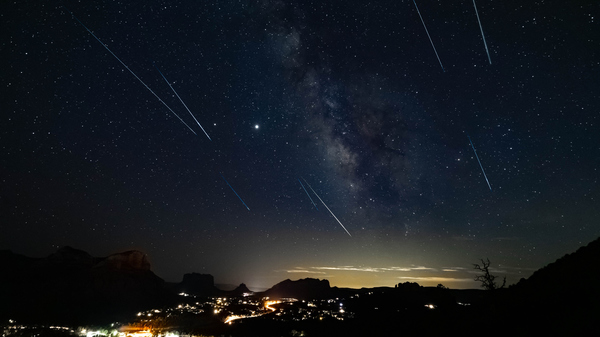What Time Is It at the North Pole?
At the top of the world, the Sun rises only once every six months and no time zones apply, so how do explorers know what time it is?

Researchers in the High Arctic have to create a daily rhythm without the help of time zones or cues from the sky.
©iStockphoto.com/KijungYoon
The Arctic is like no other place on Earth; a vast, floating ice cap with no permanent population, no set time zone, and no normal daylight hours. These factors can complicate life for polar explorers, since we humans generally need a time structure to function at our best. So, in order to establish a workable day, the captains of Arctic ships are usually given the power to choose the best time zone for their missions.
Flights that land before you leave
Standing in a Place Out of Time
Imagine planting your feet directly on top of the Geographic North Pole. Standing there, shivering in the cold, you would exist in a kind of temporal anomaly - at the connecting point of all time zones on Earth.
In fact, if you were to take a short circular walk around the Pole, you could cross every time zone in a few seconds, speeding time up, in a sense, and even changing the date when you cross the International Date Line.
Since no local time applies, what else could you use to establish the hour? The position of the Sun? The sky above you would offer no clues about the time of day either. In the High Arctic, the Sun rises and sets just once a year. Looking up, you would see only the endless daylight of summer or the unyielding darkness of polar night.
And since there is no land on the Arctic ice cap, there are no permanent research stations to establish a time zone for their purposes. The only humans anywhere near you would be drifting in the sea ice aboard ships. Polar timekeeping can create bizarre events, like two ships operating in different time zones despite being right next to each other. ©iStockphoto.com/Tsuguliev
A Saga of Drifting Ice and Shifting Clocks
One recent Arctic journey shows the time-warping effects of exploring near the pole. The research ship RV Polarstern sailed out of the Norwegian port of Tromsø and into the Arctic Ocean in September 2019, coming to rest on an ice floe a few days later. Her mission was to drift with the ice and study the effects of climate change on the Arctic ice sheet.
The long polar sunset lingered for weeks in October. As the last glimmer of light disappeared, the ship´s captain decided on a policy of moving the time zone back once a week, for six consecutive weeks.
This was no easy task. Clocks had to be precisely re-set, instruments calibrated, work shifts adjusted, and communications re-organized for each time change.
This policy created some of the temporal oddities that can arise in the Arctic. A short time later, another ship, the icebreaker Akademik Fedorov, pulled up right next to the Polarstern to deliver supplies. In that case, the vessels were actually existing in different time zones, creating a bizarre time gap between two ships that were just meters apart.
Less Complex at the South Pole
The way scientists establish time at the poles varies according to which end of the Earth they are studying, and the focus of their research.
In contrast to the drifting cap of the Arctic, Antarctica is a continent, made up of both land and ice, and it hosts permanent, inhabited research bases. So the general rule in Antarctica is to use the time zone of the sponsor country of the permanent station.
For example, the Norwegian Troll Station established a time zone similar to Norway, to make communications with Oslo easier. And at the Australian Casey Station, they use a time similar to Canberra, Australia.
Time for Body Rhythms and Global Trade
To function efficiently, most people need a sense of the rhythm of the day. At the poles, this can be challenging. In the polar night, there is only darkness in the sky, and our body receives no clues about when to get up, eat, or drift off to sleep. There is no changing light pattern to trigger our circadian rhythm.
In Sync with Circadian Rhythms
But the need for time structures goes beyond our personal well–being. The world at large relies on time zones to operate efficiently. In fact, it was the desire to better coordinate international shipping, travel, and trade that led to the International Meridian Conference of 1884 in Washington D.C., which established many of the time zones that are in use today.